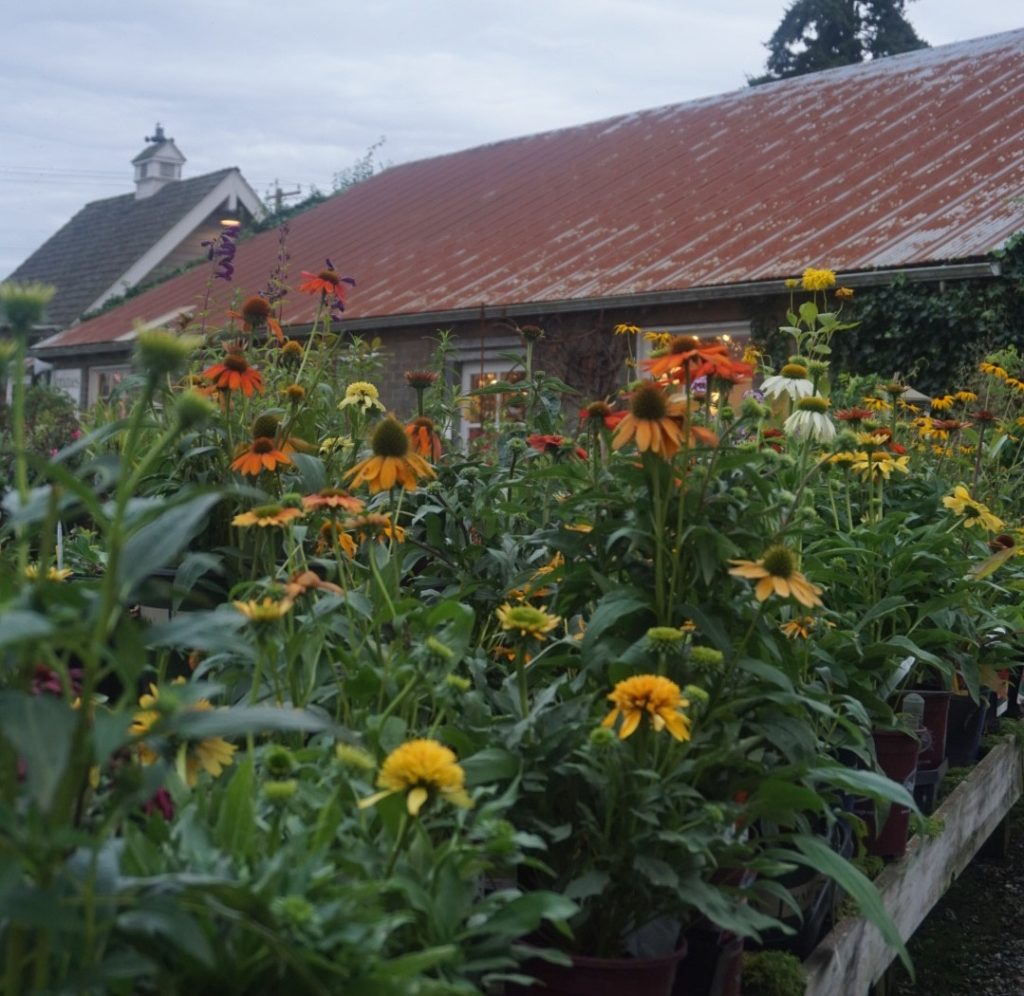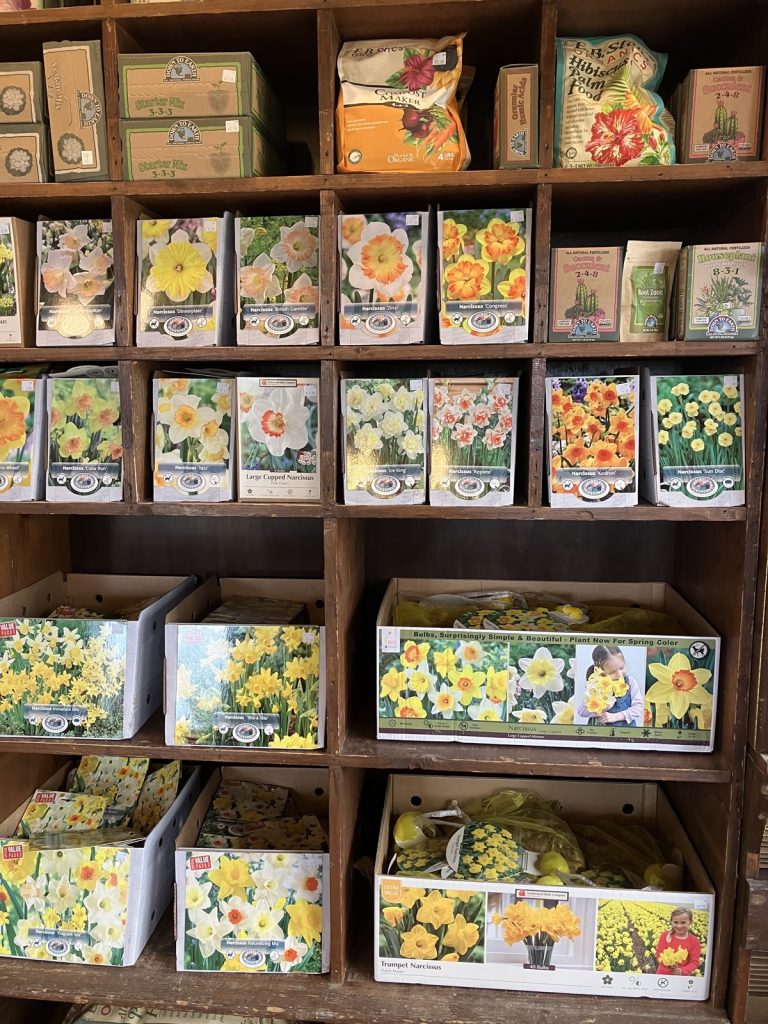The weather is turning cooler, with crisp mornings that change the leaves from green to the bright colors of fall. You may be looking out at the last blooms of summer wondering what you should do to prepare for the next year. Maybe you are thinking your outside work is done for the year, but don’t put away that trowel just yet! Fall planting and winter garden preparation is very important. If you aren’t sure what to plant or what to do, don’t worry! The experts at Christianson’s Nursery & Greenhouse have given us your guide to fall planting in Skagit County along with winter garden preparation.

What Gardening Zone is Skagit County?
Your first question should be, what zone am I in? This lets you know your average temperature range and what plants should thrive here. “The Skagit Valley is primarily in USDA Hardiness Zones 7b to 8a the closer you get to the water,” shares Emma Christianson, of Christian’s Nursery & Greenhouse. “This means we enjoy a relatively mild climate, which allows for a wide variety of plants to thrive.”
She says it’s important to know this so you choose the right plants for your garden. You don’t want to waste money on plants that won’t survive the winter! A quick note about zones if you don’t know, the warmer summers/the milder winters the larger the number. So, for example, if a plant’s tag says it’s zoned for 10 – 12, it’s not going to do well in our climate, except as a house plant or in a heated greenhouse. Personally, I like to choose plants that are at least a zone below mine, so there is some wiggle room if we have one of those harsh winters. That means I look for plants that can survive to at least a zone 6.
Zones tell you other important gardening information. “It also informs decisions about when to plant and when to expect blooms or harvests,” shares Emma.

What Should I Plant in the Fall in Skagit County?
Emma says now is the time to plant! “Right now is a great time to plant fall annuals, perennials, certain cool-season vegetables like kale and spinach, as well as most trees and shrubs,” she explains. “It’s also a good time to start planting spring-flowering bulbs, such as daffodils, crocus, snowdrops, tulips, and more unusual alliums and fritillaria.”
The window for fall planting is quite long, so you still have plenty of time to get out there and do some gardening. “It’s generally best to stop planting tender annuals by mid-October,” Emma advises. “For perennials and bulbs, you can plant until the ground freezes, typically in mid-November.”
“As we move deeper into fall, consider planting cover crops to enrich the soil or hardy perennials like hellebores and evergreen shrubs,” explains Emma. “You can also plant garlic in late October for a harvest next summer!”
If you are looking to add some height, and later shade, to your garden, Emma suggests planting trees in the fall as well. A visit to Christianson’s Nursery & Greenhouse can you give you lots of options. “Later into the fall, we also have our best selection of balled in burlap trees, which are field grown and dug and then shipped to the Nursery,” she adds. “Because the root ball is kept intact, [balled in burlap] trees typically experience less transplant shock and easily adapt to most garden conditions.”

When Can I Transplant Plants in my Skagit County Garden?
Now! Now is a great time to transplant, divide or thin areas of your garden. “The cooler temperatures and increased rainfall help reduce stress on plants, allowing them to establish roots before winter,” adds Emma.
Tips for Planting Fall Bulbs in Skagit County
Christianson’s Nursery & Greenhouse not only has a large selection of plant, but their expert gardeners can help answer your questions. Here are a few tips from Emma on how to successfully plant them so you can enjoy the blooms next spring:
Choose Quality Bulbs: Look for firm, healthy bulbs.
Plant at the Right Depth: A good rule of thumb is to plant bulbs about three times the height of the bulb.
Good Drainage: Ensure your soil drains well to prevent rot.
Watering: Water them in after planting, but don’t overwater.

Don’ts to Fall Planting and Winter Garden Preparation in Skagit County
Along with tips, there are a few things that Emma says people often do that they shouldn’t in the Fall or early winter:
Overwatering in Fall: Many think they need to water frequently, but fall rains often provide enough moisture.
Pruning Late in Fall: Pruning certain plants late in the season can stimulate new growth that won’t harden off before winter, so it is best to avoid hard pruning in the fall.
Ignoring Mulch: Some skip mulching, which is essential for protecting roots from temperature fluctuations. Mulching is highly recommended; it helps retain moisture and insulates the soil.
Final Winter Garden Preparation Tips
“Adding organic matter, like compost, can help improve soil structure and nutrients,” Emma adds. “A light application of fertilizer can benefit some plants, but avoid over-fertilizing late in the season. Considering the recent harsh winters we have had, it is always recommended to protect newly planted plants or susceptible plants with frost cloth, mulch or both.”
We have many amazing nurseries and garden stores in our area to help you with everything you need for a blooming spring garden. The key is to prepare now! Christianson’s Nursery & Greenhouse’s motto is “Fall is for Planting” and they ready with a large and diverse selection of fall plants. “Whether you’re looking for unique varieties or traditional favorites, we have something for every garden!” Finishes Emma. Look for perennials, ornamental grasses, a diverse selection of hedging material, trees and shrubs, and many types of bulbs. You can follow Christianson’s Nursery & Greenhouse on Facebook for updates on inventory and more planting tips.
Happy Gardening!




































